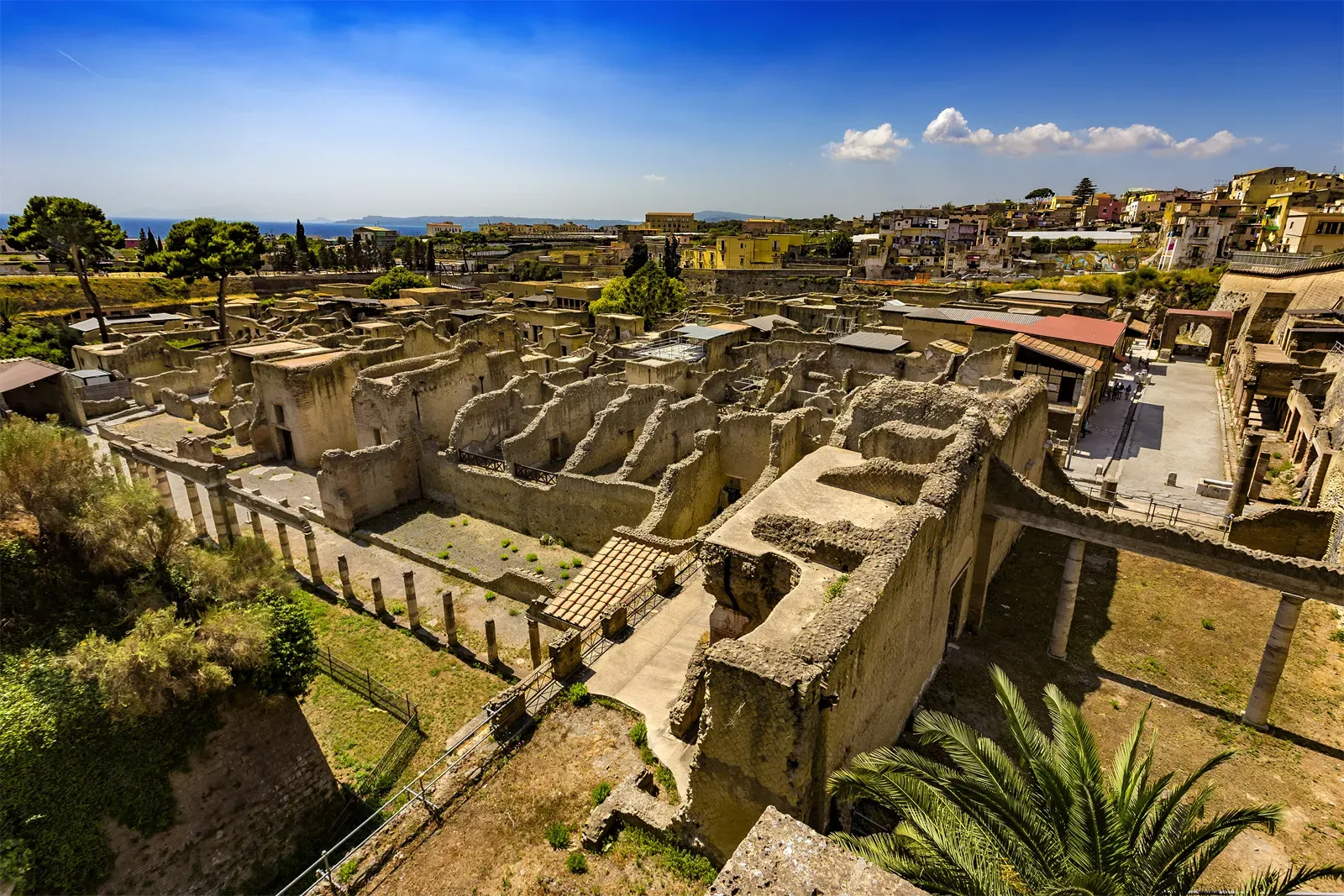The Best Ancient Ruins to Visit in Europe (That Aren’t Total Tourist Traps)

Europe’s packed with ancient ruins, but not all of them are worth the crowd or the cost. Whether you're into Roman history, Celtic legends, or old-world engineering, here are the ruins that are actually worth your time.
Key Takeaways
- Europe has no shortage of ruins—but these are the ones where history hits and the experience holds up.
- This list includes famous spots that live up to the hype, plus a few lesser-known gems that aren’t overrun.
- Great for solo travelers, couples, and history nerds looking to connect with places that still feel real.
- We’ve also dropped in links to useful travel guides from GTFO.co to help you plan smarter, pack lighter, and skip the noise.
Why Visit Ruins at All?
Because ruins are more than just old stones, they’re proof that people were building, believing, and living full lives thousands of years ago. And when you stand in what’s left, you get a quiet, humbling kind of perspective.
The good news? You don’t need to be a history major or wear zip-off pants to appreciate them. You just need curiosity and a solid pair of walking shoes.
Here’s where to go.
The Best Ancient Ruins in Europe (That Still Feel Alive)

1. Pompeii – Italy
Why it’s worth it:
Buried by Mount Vesuvius in 79 AD, this city is a full freeze-frame of Roman life. Walk through bakeries, bathhouses, even graffiti-covered walls. Yes, it gets crowded—but it still hits hard.
Pro tip:
Go early, and skip the guided group tours. Wander on your own, or download an audio guide.

2. Delphi – Greece
Why it’s worth it:
Perched in the mountains with killer views of the valley, Delphi was once considered the center of the world in ancient Greek mythology. The Temple of Apollo, the amphitheater, and the old athletic grounds still stand.
Best part:
The landscape around the ruins adds to the weight of the place—it’s quiet, vast, and weirdly emotional.

3. Skara Brae – Scotland
Why it’s worth it:
This Neolithic village predates the Pyramids and Stonehenge, but it’s not nearly as hyped. On the Orkney Islands, Skara Brae gives you stone houses, furniture, and pathways still visible after 5,000 years.
Bonus:
The setting—windswept cliffs, moody skies, green grass—feels like a time machine in itself.

4. Segesta – Sicily
Why it’s worth it:
Everyone heads to Agrigento, but Segesta is arguably cooler, and way less crowded. The Greek-style temple and amphitheater sit untouched in rolling hills, with barely a fence in sight.
Ideal for:
Photographers, slow travelers, and anyone who wants the ruin-with-a-view experience without busloads of tourists.

5. Butrint – Albania
Why it’s worth it:
Layered history. Butrint’s got Greek ruins, Roman baths, a Byzantine basilica, and a Venetian fortress, all in one spot, surrounded by wetlands and lakes. It's one of the best under-the-radar historical sites in Europe.
Why it stands out:
It feels wild. You walk through woods, not rope-lined walkways. Bring bug spray and curiosity.

6. Ephesus – Turkey
Why it’s worth it:
Okay, Turkey technically straddles two continents, but this one makes the cut. Ephesus is one of the best-preserved ancient cities in the world. Giant stone roads, multi-level libraries, intricate mosaics, and towering columns.
Pro tip:
Start from the upper gate and walk down. Wear shoes with grip, it’s marble.

7. Conímbriga – Portugal
Why it’s worth it:
Far less crowded than anything in Italy or France, Conímbriga is full of Roman houses, gardens, and incredible mosaics, many still in place. It’s quiet, affordable, and immersive.
Nearby:
Coimbra, Portugal’s medieval university town, makes a great base.

8. Mycenae – Greece
Why it’s worth it:
Home of Agamemnon, this Bronze Age city predates classical Greece by centuries. The massive stone walls (the "Cyclopean" ones), the Lion Gate, and the beehive tombs give it a raw, mythic feel.
Hot tip:
Pair it with a stop at nearby Epidaurus, which has one of the best-preserved ancient theaters in the world.

9. Carnac Stones – France
Why it’s worth it:
Think of it as France’s version of Stonehenge, but with way more stones, over 3,000 of them. These mysterious standing stones stretch across fields and forests in tidy, eerie lines.
What’s cool:
No one’s 100% sure why they were placed. You can walk between many of them without restrictions.

10. Herculaneum – Italy
Why it’s worth it:
Pompeii’s lesser-known sibling. Smaller, better preserved, and way easier to explore in a couple of hours. You’ll find wood beams, colorful frescoes, and ancient skeletons still where they fell.
Perfect for:
Those who want the “city frozen in time” feel without the crowds.
A Few More That Deserve a Mention
- Vindolanda (UK): A Roman fort just south of Hadrian’s Wall. Dig sites are still active.
- Tarragona (Spain): Roman amphitheater by the sea, plus a whole city full of ruins.
- Sparta (Greece): Less intact, more emotional. It’s the bones of a legend.
- Baelo Claudia (Spain): Roman ruins right by a beach. Yes, please.
Tips for Visiting Ruins (Without Losing the Plot)
- Get there early or late. Sunrise ruins hit different. So do ruins with no tour groups.
- Wear real shoes. Cobblestones and gravel don’t care about your fashion sense.
- Bring water. Many sites are exposed with zero shade.
- Don’t rush. Some of the best moments happen when you sit down and just look at what’s still standing.
Bottom Line
Ancient ruins aren’t just history lessons, they’re proof that people have been building, dreaming, and screwing things up for thousands of years. Seeing what’s left helps put your own life in perspective.
And the best part? You don’t need to hit only the big-ticket names. Some of the most moving, raw, and beautiful ruins in Europe are the ones just off the radar.
Make room for at least one of these on your next trip, and take your time when you’re there.
Common Questions
Q: What’s the best time of year to visit ruins in Europe?
Late spring or early fall. Fewer crowds, better weather, and lower prices.
Q: Do I need a guide?
Not always. Many ruins offer audio guides or solid signage. But for bigger or less self-explanatory sites (like Delphi or Ephesus), a guide can add depth.
Q: Are ruins good for kids or families?
Yes—but choose interactive spots. Sites with visible homes, baths, or amphitheaters usually hold interest better than scattered rocks.
Q: Can I include ruins on a budget trip?
Definitely. Many ruins are free or low-cost. Combine with a few low-budget vacation ideas for a trip that’s both affordable and memorable.
Need more offbeat travel ideas? GTFO.co is loaded with practical guides, smart packing tips, and trip ideas that skip the clichés.





